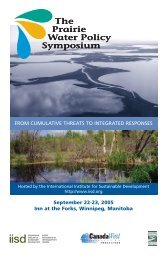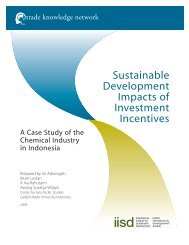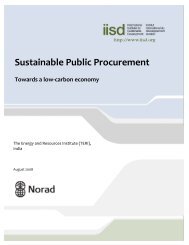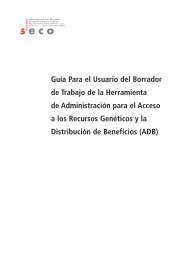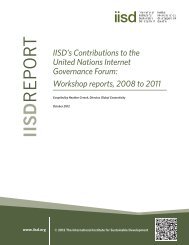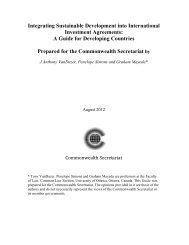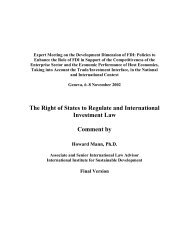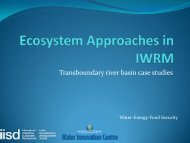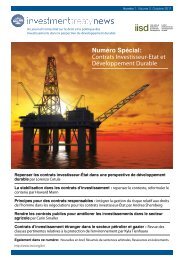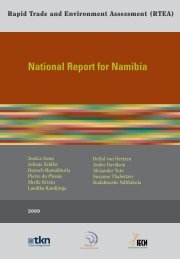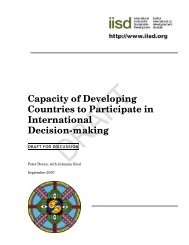Manitoba Climate Change Task Force - International Institute for ...
Manitoba Climate Change Task Force - International Institute for ...
Manitoba Climate Change Task Force - International Institute for ...
Create successful ePaper yourself
Turn your PDF publications into a flip-book with our unique Google optimized e-Paper software.
<strong>Climate</strong> Model • A quantitative way of representing the interactions of the atmosphere,<br />
oceans, land surface and ice. Models can range from relatively simple to very complex.<br />
<strong>Climate</strong> Modeling • Computer-based simulations of the earth’s climate that uses past<br />
and present patterns to predict the future.<br />
Conference of the Parties (COP) • The COP is the supreme body of the United Nations<br />
Convention on <strong>Climate</strong> <strong>Change</strong>. It currently meets once a year to review the convention’s<br />
progress. The word “conference” is not used here in the sense of “meeting” but rather<br />
“association” of states that have agreed to support the convention.<br />
De<strong>for</strong>estation • The removal or degradation of <strong>for</strong>est stands by cutting and burning to<br />
provide building materials or fuel, or to create land <strong>for</strong> agricultural purposes, building<br />
sites or roads.<br />
Desertification • The progressive destruction or degradation of existing vegetative cover<br />
to <strong>for</strong>m desert. This process can occur due to overgrazing, de<strong>for</strong>estation, drought and<br />
the burning of extensive areas. Once <strong>for</strong>med, deserts can only support a limited number<br />
of plants and animals. Climatic effects associated with this phenomenon include<br />
increased reflection of energy from the earth’s surface, reduced atmospheric humidity,<br />
and greater atmospheric dust.<br />
Emissions • The release of pollutants that can be trans<strong>for</strong>med into greenhouse gases,<br />
and/or the direct release of greenhouse gases, into the atmosphere over a specified area<br />
and period of time.<br />
Emissions Trading • Article 17 of the Kyoto Protocol establishes a mechanism whereby<br />
those countries with emissions commitments (industrialized countries) may trade their<br />
emission allowances with other industrialized countries that are parties to the protocol.<br />
For example, if a company in Canada reduces its greenhouse gas emissions to less than<br />
what it was emitting in 1990, it will have an emissions credit. The company could then<br />
sell its emission credit to an Australian firm that has not been able to reduce its emissions<br />
to 1990 levels in the necessary timeframe. The aim of emissions trading is to improve<br />
the overall flexibility and economic efficiency of making emissions reductions.<br />
Fossil Fuel • A general term <strong>for</strong> combustible carbon deposits of biological origin,<br />
including coal, oil, natural gas, oil shales and tar sands. These fuels emit carbon dioxide<br />
into the atmosphere when burned, thus significantly contributing to the greenhouse<br />
effect and climate change.<br />
Fossil Fuel Combustion • Burning of coal, oil (including gasoline) or natural gas,<br />
usually to generate energy. This burning releases carbon dioxide as well as by-products<br />
that can include methane and carbon monoxide. Carbon monoxide, methane, and<br />
many other unburned hydrocarbons slowly oxidize into carbon dioxide in the atmosphere.<br />
Common sources of fossil fuel combustion include cars and electric utilities.<br />
53



